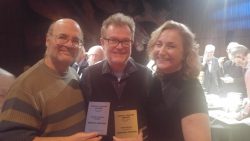LISTEN UP! 2019 YOUTH THEATRE PROJECT: Seeks Youth Actor and Stage Manager

DO YOU LIKE TO PERFORM? DO YOU FEEL YOU’RE NOT BEING HEARD? WANT TO DO SOMETHING ABOUT IT? JOIN THE LISTEN UP! YOUTH THEATRE PROJECT Youth Actor and Stage Manager Wanted (2 positions) Reporting to the Artistic Producer, the troupe will be involved in the research, creation rehearsal and performance of scenes for a play based on youth issues during the winter/spring of 2019. This year’s play will focus on how to overcome negative issues around body image, self-esteem, media and peer pressure and eating disorders. Specific duties include: research of facts and events relating to local youth issues to be used in the creation of theatrical scenes be involved in the improvisation, creation and rehearsal of theatrical scenes present scenes as part of public performances be prepared to participate in after-show audience talkbacks at all performances assist with load in, load out and setup at all performances in addition, the Stage Manager will support the rehearsal process and run sound during all performances Qualifications, skills and interests include: interest in local youth issues interest in theatre and/or performing arts excellent literacy and dramatic skills willingness to train keen sense of responsibility able to work in a team setting punctual at all times able to be self-directed and motivated take instruction and direction well An honorarium will be provided. Preferred Age Range: 14-25 years of age Hours: Part-time from approx. Feb. 1 to Apr. 30, 2019 To apply, please send an email outlining why you’d like to be part of this project and why you feel you would be a good fit, as well as a resume. APPLICATION DEADLINE: January 25, 2019 Email application to: burning@web.ca More information: burningpassionstheatre.com Continue reading






